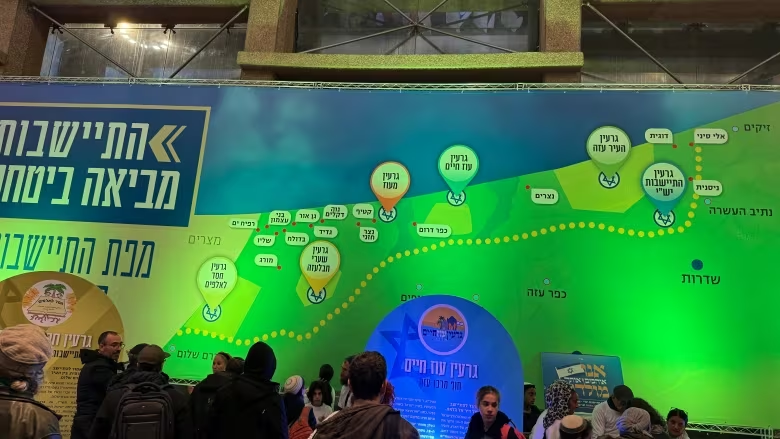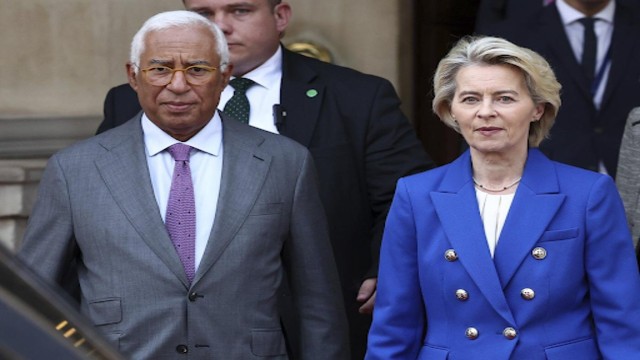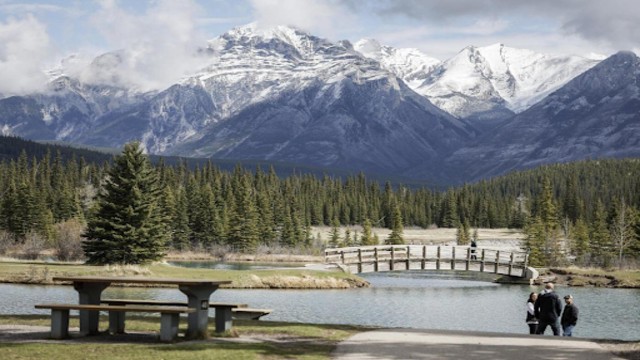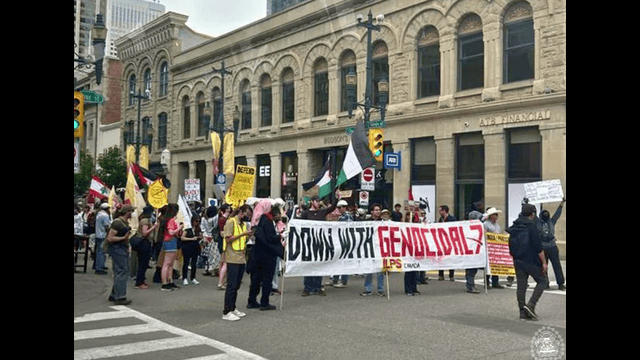
This map, presented at a recent conference in Jerusalem, outlines potential Jewish settlements in the Gaza Strip during the conflict with Hamas. Although the Israeli government asserts no intention of permanent occupation, the settler movement holds differing views on the matter (Chris Brown/CBC).
In a recent gathering of right-wing activists in Jerusalem, the "Settlement Brings Security" conference showcased a clear vision for the future of the Gaza Strip according to Israel's far-right settler movement. The conference, attended by thousands, featured a large map displaying proposed Jewish settlements in Gaza, with a Star of David placed on top of Gaza City. Despite official statements from Prime Minister Benjamin Netanyahu rejecting the resettlement of Gaza, the influential settler movement, including key government figures, expressed its support at the event.
Organizers distributed T-shirts and brochures, urging potential settlers to make early plans for relocation. Chief settler organizer Daniella Weiss suggested that Netanyahu had left an opening for a return to Gaza, implying a broader government strategy. While Netanyahu officially opposes resettlement, the significant presence of cabinet ministers, including National Security Minister Itamar Ben-Gvir and Finance Minister Bezalel Smotrich, at the conference highlights the political power of the settler movement.
The idea of establishing Jewish settlements in Gaza faces legal and ethical challenges, as it would be considered illegal under international law and potentially a war crime. However, within Israeli society, grappling with the aftermath of the October 7th attacks led by Hamas, there is a growing acceptance of the concept. Polls indicate increasing support, ranging from a quarter to 40 percent of respondents, for rebuilding Jewish settlements in Gaza.
The Palestinian Authority condemned the settlers' conference, denouncing it as an endorsement of genocide, war crimes, and the forced transfer of the Palestinian people. Canada and the United States also voiced opposition to the proposed plans, emphasizing the rejection of forced displacement and the establishment of additional settlements.
Despite the destruction caused by Israel's recent air and ground assaults on Gaza, the settler movement remains steadfast in its vision. The conference attendance, estimated at up to 5,000 people, underscores the movement's strength and serves as a warning to Israel's allies about potential future actions. As the political landscape evolves, there are concerns that extreme policies discussed on the fringes may gradually become mainstream, shaping the direction of the government in the years to come.















